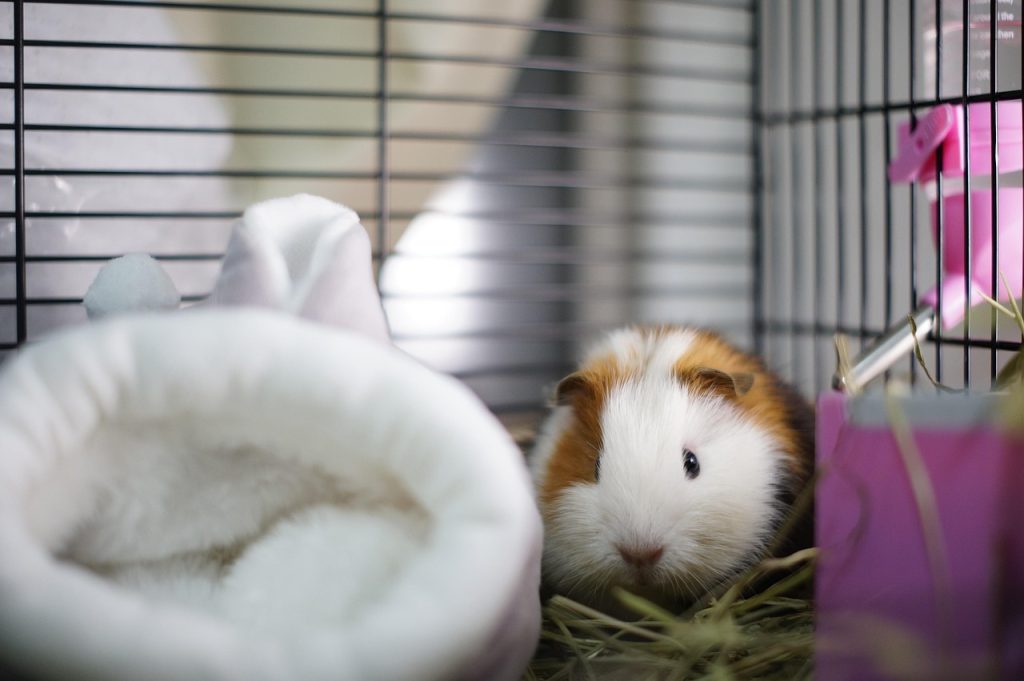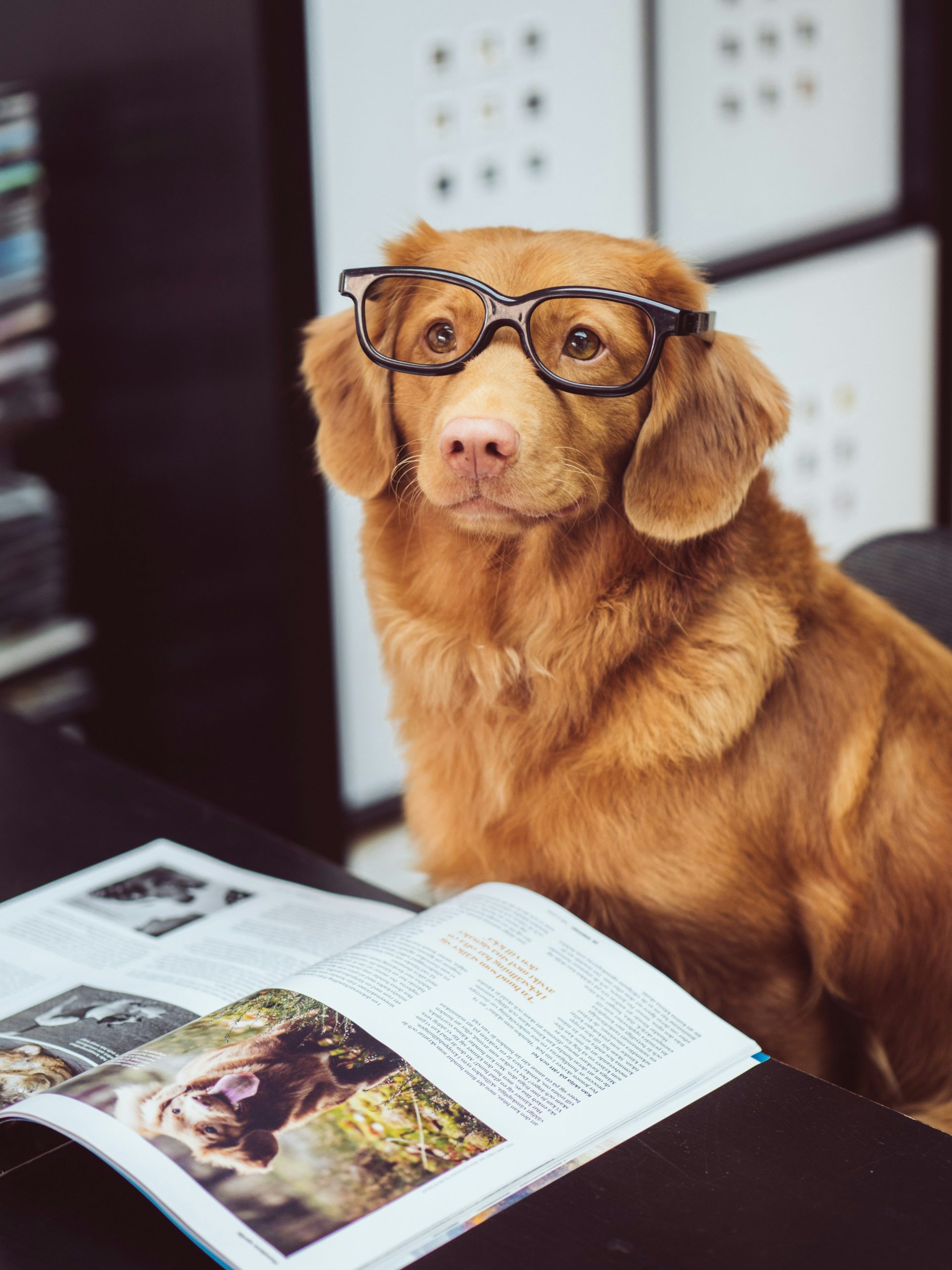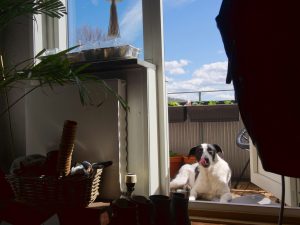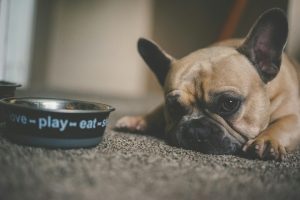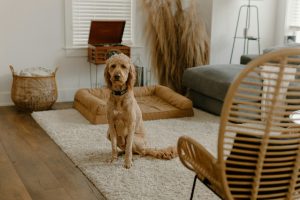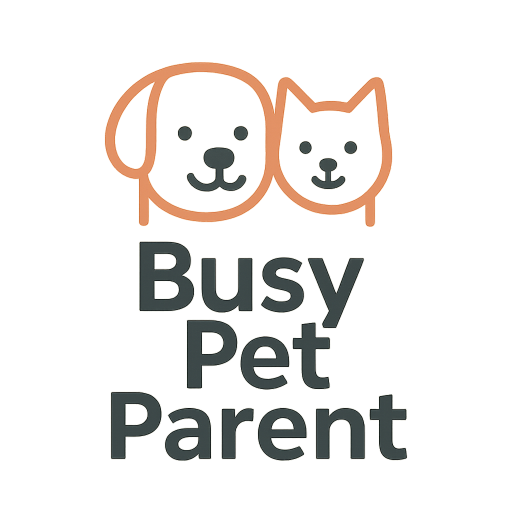3. Use a Layered Bedding System That Actually Controls Odor
Odor control in a guinea pig apartment setup is won or lost in the bedding. Single-material litters can get soggy fast; a layered system keeps surfaces dry and smell contained. Start with a waterproof base (coroplast or a washable mattress protector) to shield floors. On top, use a high-absorbency core (washable pads or towels) and finish with a wicking surface like fleece liners that pull moisture away from paws. This combo dries quickly, reduces ammonia buildup, and makes spot-cleaning painless.
Reserve the “high-traffic potty zone” under hay racks for your most absorbent insert so the dirtiest section can be swapped daily in under a minute. For apartment airflow, keep the habitat in a gently ventilated area and skip fragrance sprays (they mask odors without fixing moisture). If you need a deeper dive on whole-home freshness, see our guide to pet odor control in apartments. For substrate safety and husbandry fundamentals, cross-check with PetMD’s guinea pig care guide.
4. Set Up a “Hay Kitchen” to Contain Mess and Make Cleaning Fast
Hay is life for cavies — and also the #1 source of apartment mess. Build a compact “hay kitchen” so strands don’t drift across the room. Position a sturdy rack or low hay basket at one end of the enclosure with the water bottle and pellets nearby. Beneath it, add a removable tray (baking sheet, litter pan, or washable pad) dedicated to catching crumbs and droppings. Because guinea pigs tend to potty where they eat, this design concentrates most waste into one easy-lift zone you can refresh daily.
Keep the kitchen area away from damp or drafty windows so hay stays dry and sweet-smelling. If you’re optimizing layout in a tight footprint, review enclosure placement tips from PetMD’s enclosure setup guide. For enrichment around the kitchen, rotate safe, simple DIY toys (paper bag tunnels, cardboard hideouts) and check out these ideas for DIY enrichment toys to keep foraging interesting without adding clutter.
5. Minimize Noise, Vibration, and Neighbor Impact with Smart Placement
Guinea pigs are sensitive to vibration and sudden noise, and your neighbors are sensitive to thumps and late-night rustling. Place the habitat on an interior wall away from shared walls and heavy-traffic zones (sliding doors, subwoofers, laundry areas). Use a stable table or shelf frame with rubber feet to decouple the cage from the floor and reduce vibration transfer. A thin exercise mat or cork board under the habitat further dampens sound while protecting floors.
For your comfort, a small white-noise machine outside the habitat can mask nighttime water-bottle tapping without blasting your pets directly. Keep scented candles, aerosols, and harsh cleaners out of the area — many household products can be hazardous; review the ASPCA Animal Poison Control list before introducing anything new. Add a few non-toxic plants (see our roundup of pet-friendly apartment plants) near, not inside, the cage to naturally freshen the air without irritating sensitive noses.
6. Build a 5-Minute Daily / 20-Minute Weekly Cleaning Routine (You’ll Actually Keep)
The best odor control is a routine you can stick to. A simple system keeps your guinea pig apartment setup fresh without marathon cleanups. Each morning or evening, do a 5-minute sweep: remove wet spots from the “bathroom zone,” lift the hay-kitchen tray to dump crumbs, refill hay and water, and lint-roll the fleece surface. Wipe the water-bottle nozzle and pellet dish, then fluff the bedding so air reaches the top layer. This tiny cadence prevents smells from ever getting started.
Once a week (about 20 minutes), launder fleece on warm with an extra rinse using unscented detergent, scrub the coroplast base with diluted vinegar, and descale bottles and bowls. Keep two full sets of liners so you can swap in seconds and wash at your convenience. A small hand vac parked nearby speeds spot cleans; store pads, liners, and cleaning supplies in labeled bins under or beside the habitat. For whole-home freshness strategies, see our guide to pet odor control in apartments, and confirm general husbandry best practices with PetMD’s guinea pig care guide.
7. Keep Temperature & Humidity in the Safe Zone (No Drafts, No Heat Spikes)
Guinea pigs are far more comfortable in a stable, moderate room climate than in fluctuating hot-cold cycles. Place the enclosure away from heaters, AC vents, exterior doors, and single-pane windows. In summer, use a fan on low that moves air past the cage (not directly at it) and draw blinds during peak sun; in winter, add a draft stopper and keep habitats a few feet from chilly glass. A tiny digital thermometer-hygrometer costs a few dollars and helps you maintain a steady, comfy range for your pigs and your nose—stable humidity prevents musty bedding.
If your apartment traps heat, schedule floor time during the coolest part of the day and refresh water more often. Avoid scented candles and aerosol sprays in the habitat room; guinea pigs have sensitive airways. For a quick husbandry refresher on environmental needs (including bedding, hideouts, and layout), cross-check PetMD’s enclosure setup guide.
8. Design a Small-Space Floor-Time Zone & Enrichment Rotation
Even with a roomy cage, daily floor time keeps bodies fit and minds busy. Create a fold-away playpen on a waterproof mat with low panels, tunnels, and at least two hideouts so shy pigs feel safe exploring. Rotate textures—cardboard corridors, crinkly paper, fleece forests—and scatter small veggie “forage” bits to encourage natural grazing. Keep electrical cords covered and block baseboards with a simple coroplast strip or foam edging to protect your rental.
To keep engagement high without clutter, rotate a few homemade items each week—paper-bag hay stashes, stuffed toilet-paper rolls, or cardboard bridges (always supervise and remove soggy pieces). For ideas that are cheap, safe, and quick to make, try these DIY enrichment toys and our roundup of DIY pet toys that save you money. Consistent, enriching floor time is one of the easiest ways to reduce boredom squeaks and keep your guinea pig apartment setup peaceful.
9. Use Vertical Storage to Hide Supplies and Keep the Habitat Area Minimal
Apartments get cluttered fast when hay bales, liners, pads, and cleaning tools spill into living space. Reclaim square footage by going vertical. A narrow shelving tower beside or behind the enclosure can hold labeled bins for fleece liners, washable pads, “cleaning day” tools, and a small caddy with scissors, nail trimmers, and a lint roller. Clear, airtight containers keep pellets and hay tidy and reduce dust; a slim broom and hand vac mounted on wall hooks make spot cleans instant.
Keep “messy” tasks localized: place a small trash can with a closing lid and a baking sheet or spare tray for dumping the hay-kitchen crumbs (from Tip 4). When storage looks calm, the entire guinea pig apartment setup feels intentional and décor-friendly. For whole-home freshness beyond the cage area, see our guide to pet odor control in apartments.
10. Create a One-Stop “Nutrition Station” for Hay, Pellets, Veggies, and Water
Diet tasks are easier—and cleaner—when they live in one place. Dedicate a single shelf or cabinet to food prep: airtight hay storage on top, pellets in a sealed bin (scooper inside), and a small fridge bin for pre-washed veggie portions. Prepping two to three days of leafy greens at once (pat dry, then store with a paper towel) keeps feeding smooth when you’re busy. Mount the water bottle so the nozzle sits just above shoulder height for your pigs; keep a spare bottle ready so swaps take seconds.
Review portions and safe produce against PetMD’s guinea pig care guide and refresh hay frequently to encourage natural foraging. Place the entire nutrition station away from heat sources and direct sun so food stays fresh and the habitat doesn’t steam up—balanced airflow from Tip 2 will help the area stay dry and odor-free.
11. Clean with Pet-Safe Methods—Skip Strong Scents and Aerosols
Small animals have sensitive airways, so harsh cleaners and fragrances can do more harm than good. For routine deep cleans, remove pigs and use diluted white vinegar on coroplast and hard surfaces; rinse and dry fully before re-lining. Wash fleece on warm with unscented detergent and an extra rinse cycle, then air-dry to preserve wicking performance. Avoid essential-oil sprays, room deodorizers, and bleach unless advised by your vet for a specific reason and thoroughly rinsed afterward.
If you’re unsure whether a product is safe around pets, check the resources at ASPCA Animal Poison Control. A nontoxic cleaning routine plus the layered bedding from Tip 3 is a stronger smell solution than any perfume—and it keeps you in control if your landlord is scent-sensitive. For additional strategies beyond the cage, see our apartment-wide odor control guide.
12. Chew-Proof Your Space: Cords, Baseboards, and Safe Materials
Guinea pigs explore with their teeth, which is adorable—until a charger cable or baseboard takes the hit. In a renter-friendly guinea pig apartment setup, block access to wires with cord channels or split-loom tubing, and run cables up and behind furniture instead of across floors. Line the wall edge behind the habitat with a coroplast strip or clear acrylic guard so curious nibblers can’t reach paint, drywall, or wood trim. Skip softwoods and aromatic woods (like cedar) inside the enclosure; choose kiln-dried aspen, coroplast, and untreated hardwoods instead.
Keep the play area “clean” by removing tempting hazards before floor time: dangling blind cords, foam mats with chewable corners, houseplant leaves, and scented diffusers. If you’re unsure about a cleaner, plant, or household product, cross-check safety with ASPCA Animal Poison Control. Chew-proofing once saves you from repeat repairs—plus it keeps pigs safe from shocks, splinters, and toxins.
13. Plan for Pairs: Social Layouts, Neutral Intros, and Duplicate Resources
Guinea pigs are social and do best in pairs or small groups—great news for apartment life if you plan the layout. Aim for generous continuous floor space (not stacked levels) and include at least one hideout per pig plus one extra so no one gets cornered. Provide two hay piles, two water sources, and two pellet dishes placed far apart to reduce resource guarding. When bonding new companions, start with a side-by-side quarantine/visual introduction and then move to a neutral, clutter-free space for the first meet so they can interact without territorial pressure.
Watch for normal rumble-strutting vs. escalation; add hay “grazing lanes” and wide tunnels so passing is easy. Once they’re settled, move them into the freshly cleaned main habitat at the same time to avoid ownership claims. For baseline husbandry—space, diet, enrichment—review PetMD’s guinea pig care guide, and for enclosure specifics see PetMD’s enclosure setup recommendations. A social-first design keeps the home quiet, odor under control, and daily care predictable.
14. Make Your Setup Lease-Friendly: Protect Floors, Walls, and Your Deposit
A polished guinea pig apartment setup looks intentional and keeps landlords happy. Start with floor protection: place the habitat on a waterproof layer (coroplast sheet, vinyl runner, or a washable mattress protector) that extends a few inches beyond the base to catch stray hay and drips. Use felt or rubber pads under furniture legs and cage stands to prevent scuffs and vibration transfer. Along nearby walls, add a clear acrylic or coroplast “splash guard” at nibble-height so baseboards and paint remain pristine.
Keep a short “move-out checklist” on your phone: patch nail holes, do a vinegar rinse on the habitat area, and run an extra laundry cycle for liners a week before inspection so everything smells neutral. If you’re still apartment-hunting or negotiating pet clauses, review practical guidance in the Best Friends pet-friendly rentals guide for tips on deposits, documentation, and presenting your setup as low-risk. A tidy, scent-controlled habitat plus clear routines (see Tip 6) goes a long way toward “no-drama” tenancy.
15. Build a Compact “Go-Bag” and Emergency Plan That Fits in a Closet
Small spaces demand smart preparation. Pack a soft-sided carrier (or two for bonded pairs), a folded fleece liner, disposable pads, a week of pellets, a sealed bag of hay, a collapsible water bottle, and a printed vet contact list in a single tote. Store it on the top shelf near the door with a spare set of cage clips and scissors. In a true emergency, you can lift pigs into the carrier, grab the tote, and go in under two minutes. For checklists and evacuation steps tailored to pets, bookmark the Red Cross pet disaster preparedness guide.
Do a 60-second drill once a season: confirm carriers are intact, food is fresh, and contact numbers are current. If you take medications or supplements, add a labeled pill organizer for your guinea pigs as advised by your vet. When storage is tight, hang the carrier on a sturdy wall hook and tuck the tote behind it—no floor space needed. Proactive planning keeps your cavies safe, calms your mind, and proves to property managers that you’re a responsible, prepared renter.
Final Thoughts
You don’t need a big home to give guinea pigs a big life. With space-savvy layout, airflow and bedding that truly tackle odor, and routines you can keep on your busiest days, a guinea pig apartment setup becomes effortless. The keys are horizontal room to roam, a concentrated “hay kitchen” that localizes mess, layered liners that dry fast, and enrichment that turns floor time into quiet exploration instead of restless squeaks. Add lease-friendly touches—floor and wall protection, chew-proofing, and a compact storage plan—and your habitat blends right in with the rest of your décor.
Round it out with a closet-ready emergency kit and a simple weekly cadence, and you’ll have a setup that stays clean, calm, and landlord-approved—while your cavies stay curious, comfortable, and connected to you. When you’re ready, we can add a short FAQ section to capture common search questions and strengthen SEO for this post.
Frequently Asked Questions
What should a guinea pig apartment setup include?
A space-efficient enclosure with generous floor area, a “hay kitchen” to contain mess, layered bedding (waterproof base + absorbent core + fleece), gentle airflow without drafts, daily floor-time zone with hideouts, and a compact emergency go-bag. For baseline husbandry and enclosure specifics, see PetMD: Guinea Pig Care and PetMD: Perfect Enclosure Setup.
How do I stop guinea pig odor in a small apartment?
Win the moisture battle: use a layered bedding system, spot-clean the bathroom zone daily, refresh hay often, and keep air moving past the cage. Launder fleece weekly (unscented detergent, extra rinse) and keep the hay kitchen on a removable tray. For whole-home freshness, see our guide to pet odor control in apartments.
Where should I place the cage in an apartment?
Choose a bright room with gentle airflow, away from direct sun, heaters/AC vents, kitchen fumes, and shared walls that transmit vibration. Keep scented products, aerosols, and harsh cleaners away—review common household hazards via ASPCA Animal Poison Control.
What bedding is best for guinea pigs, and how often should I wash fleece?
For apartments, a layered setup performs best: waterproof base, absorbent pads/towels, and fleece on top for wicking. Spot-clean daily and machine-wash fleece weekly (warm water, unscented detergent, extra rinse). Confirm substrate and husbandry basics with PetMD’s care guide.
How much daily floor time do guinea pigs need in small spaces?
Aim for at least an hour a day. Use a fold-away playpen on a waterproof mat with tunnels, hideouts, and safe DIY enrichment (paper-bag hay stashes, cardboard corridors). Rotate toys weekly to keep curiosity high and boredom low—see simple ideas in DIY enrichment toys and our DIY pet toys roundup.
